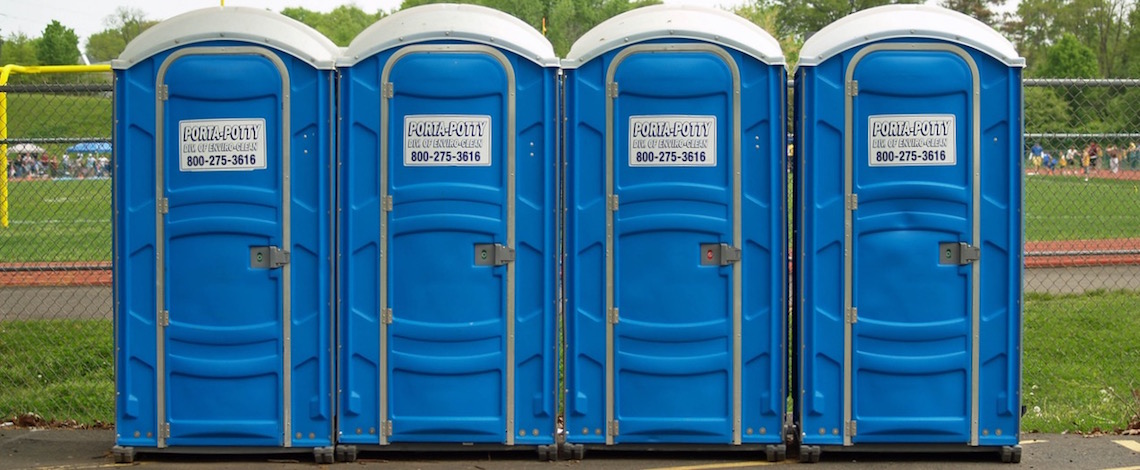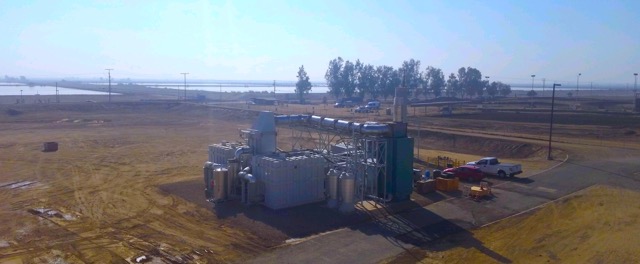
Porta-Potty image via wikipedia user David Shankbone
Written by
Just as the renewable energy industry found there was money to make from the abundant amount of cow manure produced at Valley dairies, the City of Tulare is looking to make money from human waste.
Specifically, in a manner similar to how methane is extracted from cow manure, a miniature power plant is being built at Tulare’s wastewater treatment plant to extract methane from the pools of human waste being processed there.

Southern California Edison. Contributed
That gas then would power a generator capable of producing up to 2.8 megawatts of electricity, said City Manager Joseph V. Carlini.
“Whether you use manure or human feces, the end result is methane,” he said, adding the electricity produced will be sold back to Southern California Edison and put into its electrical grid.
To put that in perspective, at its peak the biofuel-powered generator could produce enough electricity to power about 2,100 homes, on average, based on California Energy Commission data.
The city isn’t borrowing or investing a penny in the project. That’s because Tulare’s partner, Fuel Cell Energy, is footing the entire bill to install a bulk-volume fermenter, which processes the human waste in a manner similar to how anaerobic digesters breaks down cow manure to extract methane.
As for why the Connecticut company is building, operating and maintaining the device, expectations are that the methane-generated electricity could sell for about $40 million over the next 20 years, with the city and Fuel Cell Energy splitting that amount, Carlini said.
Methane is a natural byproduct of bodily waste breaking down, so it doesn’t cost the city anything. Carlini added that currently the methane at the plant is burned off to reduce air pollution.
The mini power plant currently under construction isn’t the first that Fuel Cell Energy has built in Tulare. By the end of this month, the first 2.8-megawatt plant it built is expected to go fully online at the treatment plant.
But this one will be powered by natural gas purchased locally, and its energy will go to power operations at the plant rather than being sold off.
Once again, Fuel Cell Energy has footed the bill to install and run the system, with the city benefiting because it will purchase the electricity generated at a rate of about 8 cents per kilowatt hour, less than the 13-cents per kilowatt hour it now pays SCE.
That may not seem like much, but Carlini said Tulare’s savings on its electric bill could total $18 million over the next 20 years.
The two projects are parts of a series of energy initiatives that began after Carlini was hired as Tulare’s public works manager in 2014, and one of the first things he did was petition to hire an engineering firm to develop a 10-year energy plan for the city.
An important part of the plan involved looking beyond just finding ways to save money, “Because there’s money to make here,” said Carlini, appointed city manager in June.
The last element of the 10-year plan is to expand the city’s 1-megawatt solar farm, increasing its capacity by an additional 2.41 megawatts.
The first solar farm was built about a decade ago to provide a portion of the power at the wastewater treatment plant, but it will not be needed once the natural gas fuel system is fully running in a few weeks.
Carlini said the older solar farm and the new one will generate enough electricity to power city buildings, parks and work yards – though street lights will continue being powered by SCE, as will homes and businesses in Tulare.
Currently, Tulare has nearly nine years left to pay off more than $2.4 million still owed on the $5.4 million bond it issued to fund the first solar farm — though the amount owed could drop if the city pays off the bond early.
The new, higher-capacity solar farm will cost slightly less, about $5.02 million, while being capable of generating twice as much power as the first, thanks to newer technology, Carlini noted.
As for how Tulare would pay for it, Carlini will ask the city council on Tuesday for authority to apply for up to a $3 million California Energy Commission loan at a 1-percent interest rate.
As for the rest of the money needed, the city likely will seek a standard loan coordinated through a solar company, and current quotes indicate 3.5 to 4.49 interest rates are available, according to a report for the council members.
Carlini said the solar farm expansion was inspired by the current difficulties that exist in keeping the California Public Employees’ Retirement System financially stable.
“The idea of the solar is to try to offset some of the price increases,” required by the CalPERS pension plan that Tulare pays into, the city manager said.
“This year we paid about $4.5 million. Next year we’re looking at $6.5 million,” he said, adding that the quarter of a million he expects the new solar project should save the city will help take a bit of the sting out of the higher pension costs.








